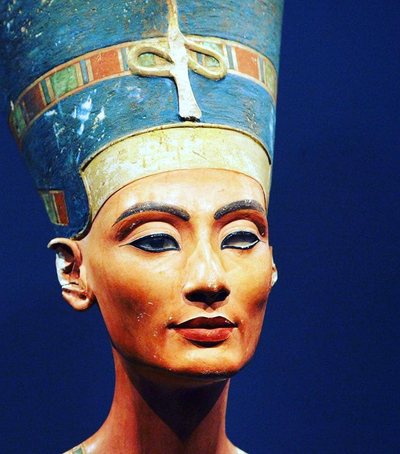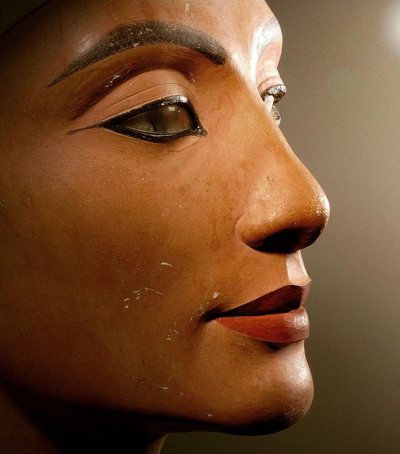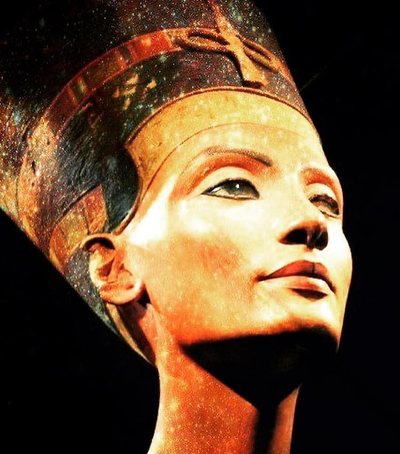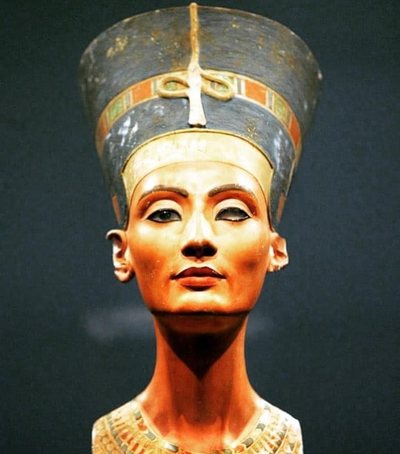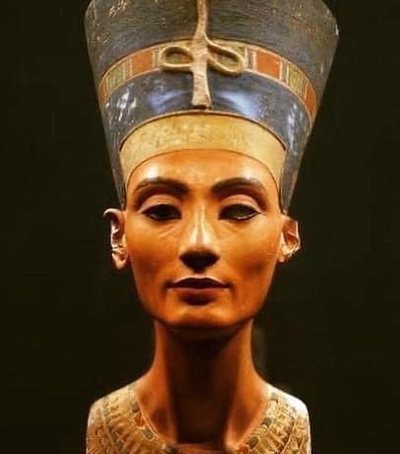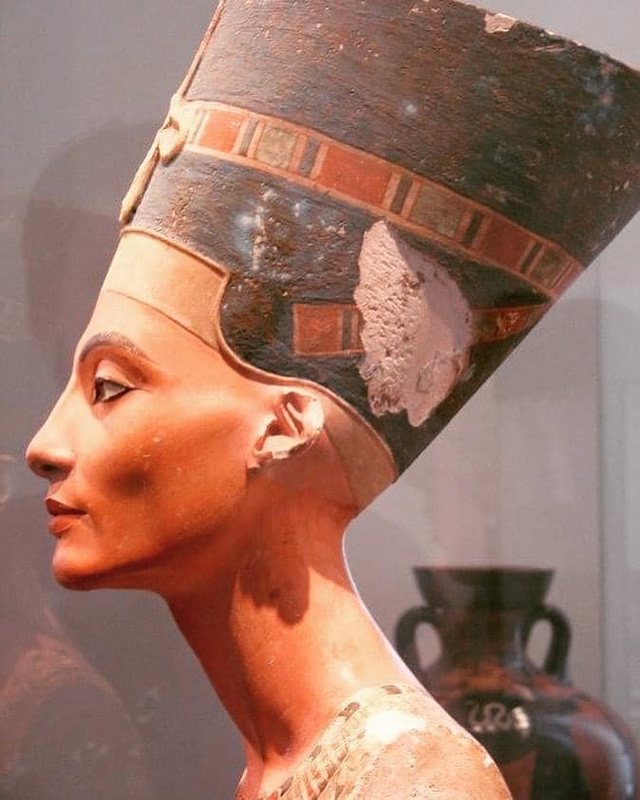
In it, the naturalism of the Amarna period merges with hierarchical formalism.
But the expressiveness of the Amarna style ends in the grotesque.
This is one of the least comforting works of art.
Its popularity relies on its incomprehensibility and the concealment of its unique features.
The proper reaction to the bust of Nefertiti is fear.
The queen appears as an android, an artificial being.
She is a young gorgon — “the disembodied head of fear.”
Paralyzed and paralyzing at the same time.
Like the statue of Khafre on the throne, this Nefertiti is graceful, restrained, and human in appearance.
She looks into the distance, seeing what is best for her people.
In this vision, she embodies self-deified authority.
The iconography of the time presents Akhenaten with semi-feminine features: short limbs, a bloated belly — perhaps the result of a birth defect or illness.
In this bust, the queen appears as a half-masculine, a vampire of political will.
Her attractive force both entices and warns you to leave.
It embodies the personality of the West, protected behind its icy and painful border of Apollonian identity.**
By Camille Paglia

